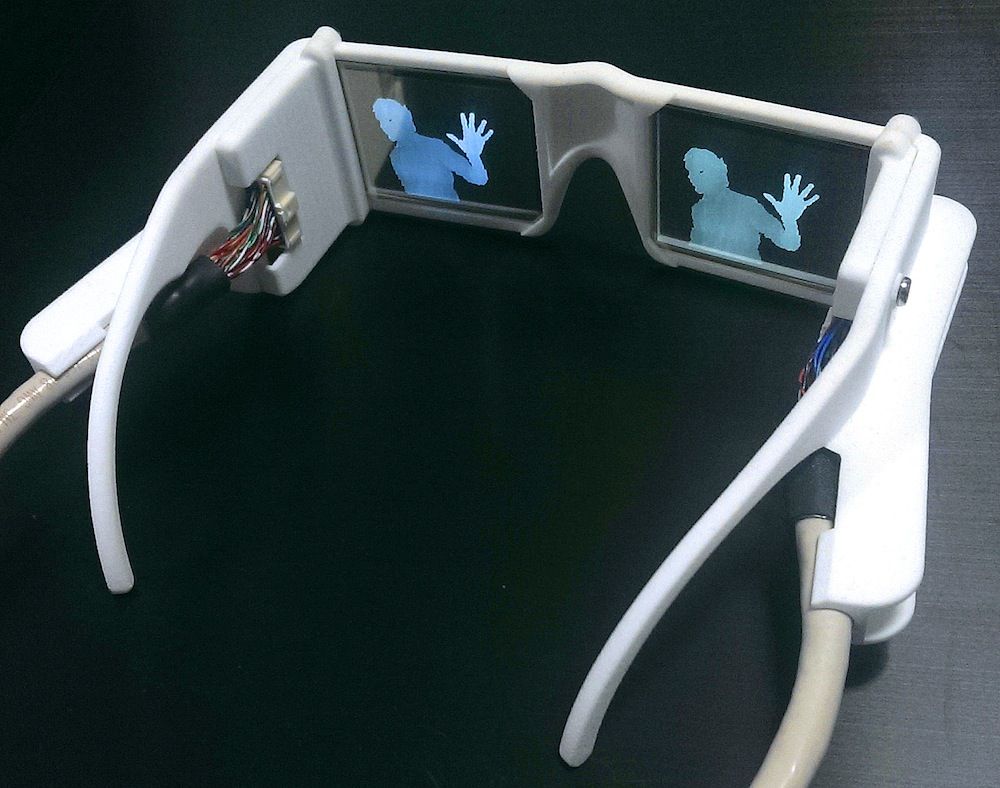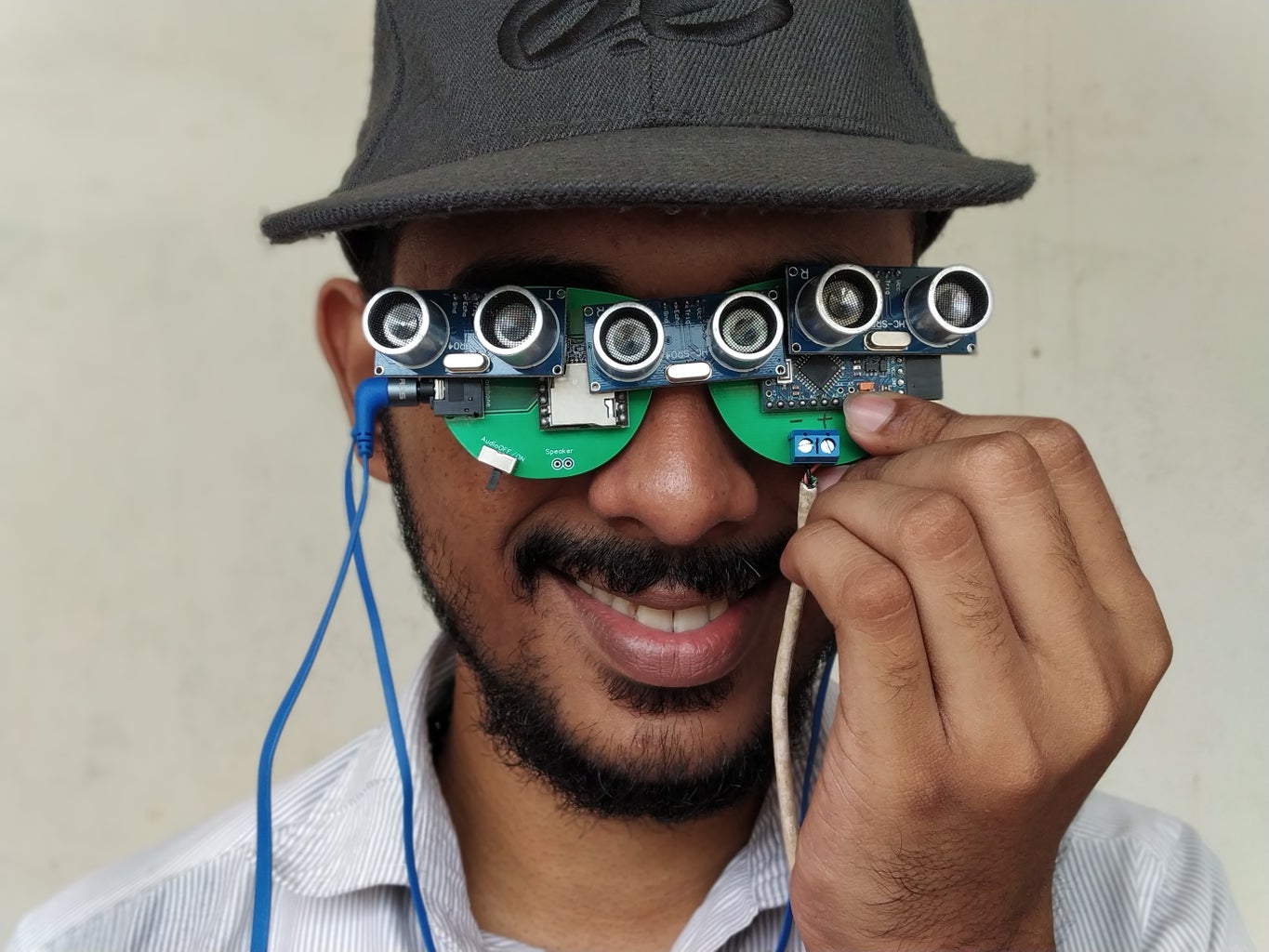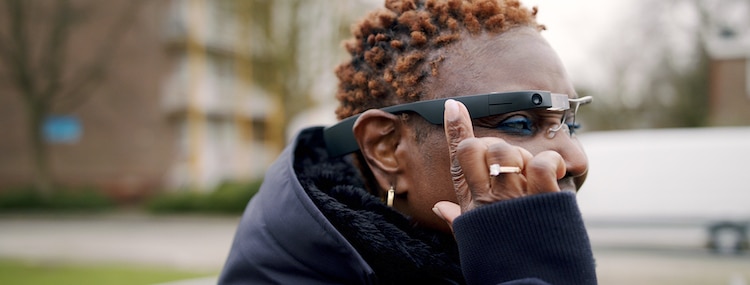Wearable Technology for Low Vision: Transforming How We Navigate the World
Wearable Technology for Low Vision: Transforming How We Navigate the World
Blog Article
Enhancing Ease Of Access Through Assistive Modern Technology for the Blind
The assimilation of assistive technology for the blind represents a pivotal development in access, essentially modifying how people navigate their atmospheres and engage with culture. From display visitors to innovative wise walking canes, these tools not only improve freedom however additionally promote inclusivity in different spheres of life. As we discover the diverse kinds of assistive devices and their tangible effect on daily living, it comes to be important to check out just how continuous technical advancements are improving the landscape of assistance for the blind neighborhood. What ramifications do these advancements hold for the future of access?
Overview of Assistive Technology
Assistive modern technology refers to a series of devices and software application developed to enhance the capabilities of people with handicaps, consisting of those who are aesthetically impaired or blind. This innovation plays an important function in promoting independence and improving the high quality of life for users. By giving alternate approaches for accessing details and doing everyday jobs, assistive modern technology equips people to browse their atmospheres much more efficiently.
The development and application of assistive technology embrace a variety of principles intended at promoting availability. These principles include user-centered style, which focuses on the needs and choices of the individual, and the integration of innovation into day-to-day activities. Such improvements guarantee that assistive devices are not only practical but easy and also instinctive to utilize.
Additionally, assistive innovation incorporates a varied spectrum of remedies, from low-tech choices like magnifiers to high-tech developments such as display visitors and Braille displays. The ongoing evolution of this area is driven by the demand to deal with the one-of-a-kind difficulties encountered by people with visual impairments (Wearable technology for low vision). As innovation remains to breakthrough, the capacity for boosting accessibility and promoting inclusivity continues to be promising, ultimately contributing to a much more equitable culture

Types of Assistive Instruments
Numerous sorts of assistive tools are offered to support individuals who are aesthetically impaired or blind, each created to resolve specific demands and obstacles. These tools can be broadly categorized into 3 major kinds: low-tech, mid-tech, and sophisticated remedies.
Low-tech tools include items such as magnifiers, Braille labels, and tactile maps. These are fairly simple devices that improve the user's capacity to connect with their atmosphere without calling for complicated technology.
Mid-tech tools often include more innovative attributes, such as electronic magnifiers and mobile Braille note-takers. These tools can offer performances like speech result, enabling users to accessibility information much more successfully.

Effect On Daily Living
The availability of different assistive tools substantially boosts the lifestyle for people who are aesthetically impaired or blind, affecting their everyday living in profound means. the original source By incorporating technologies such as screen readers, Braille shows, and audio description solutions into their routines, customers acquire higher freedom and freedom. These tools facilitate access to information, allowing people to execute everyday tasks, such as reading emails, navigating public spaces, and taking pleasure in media content.
Moreover, assistive devices empower individuals why not check here to engage even more fully in social interactions and area tasks. The ability to use smart devices equipped with access features allows for seamless communication and connection with others. This connectivity cultivates a feeling of belonging and lowers feelings of seclusion.
In specialist settings, assistive technology sustains performance by permitting people to total job tasks efficiently. Tools like voice acknowledgment software application and specialized zoom gadgets allow users to join the workforce on equal ground with their sighted peers.

Improvements in Modern Technology
Current technological advancements have actually significantly transformed the landscape of devices readily available for individuals that are blind or visually damaged. The integration of expert system (AI) and device discovering has actually generated applications that enhance navigation and things recognition. Smart device apps can now utilize AI to identify and describe environments in real-time, supplying individuals with useful contextual info.
Additionally, innovations in haptic innovation have caused the advancement of smart walking canes geared up with sensing units that identify barriers and supply responsive feedback. This empowers customers to browse their environment with enhanced self-confidence and self-reliance. Technologies in text-to-speech software application and braille screens have actually enhanced the access of digital material, enabling for seamless communication with different media.
Wearable modern technologies, such as clever glasses, are also making strides in assisting visual disability. These gadgets can offer enhanced reality experiences, overlaying crucial information onto the user's field of vision. Collectively, these developments not just improve the top quality of life for individuals who are blind but also advertise higher incorporation in society. As technology continues to evolve, the possibility for a lot more transformative tools remains on the perspective.
Future Trends and Innovations
As technology quickly proceeds, the future of assistive tools for individuals who are blind holds tremendous assurance. Developments in fabricated knowledge (AI) and artificial intelligence are poised to transform the method blind customers interact with their atmospheres. As an example, AI-driven applications are being created to enhance things recognition, allowing users to identify and navigate their environments with better convenience and precision.
Moreover, developments in haptic comments modern technology are allowing the creation of tactile maps and navigation aids that provide real-time info with touch. These advancements not just boost movement but likewise foster self-reliance. Furthermore, wearable gadgets furnished with augmented fact (AR) attributes are arising, offering individuals aesthetic info with audio descriptions, thereby bridging the gap in between the electronic and physical worlds.
Additionally, the integration of smart home innovation provides new eye doctor is opportunities for accessibility, permitting individuals to control their living environments via voice commands or smart device applications. As partnership between tech developers and the blind community proceeds, the emphasis on user-centered style will certainly make certain that future developments are customized to fulfill the unique requirements of this population (Wearable technology for low vision). The trajectory of assistive innovation guarantees a more empowering and inclusive future for people that are blind
Conclusion
Finally, assistive innovation plays a crucial duty in boosting accessibility for people with visual problems. The diverse array of tools, including screen viewers and wise walking canes, substantially improves daily living and promotes self-reliance. Continuous innovations in modern technology and user-centered design make certain that these tools provide efficiently to the one-of-a-kind demands of the blind neighborhood. As developments progression, enhanced inclusivity and empowerment can be anticipated, inevitably improving the lifestyle for those impacted by aesthetic disabilities.
The assimilation of assistive innovation for the blind stands for an essential development in availability, essentially changing how individuals navigate their settings and engage with culture.Assistive innovation refers to a range of devices and software application created to enhance the abilities of individuals with handicaps, consisting of those who are blind or visually impaired. Wearable technology for low vision.As modern technology swiftly advances, the future of assistive devices for people who are blind holds immense pledge. The trajectory of assistive modern technology assures a much more comprehensive and empowering future for individuals who are blind
In conclusion, assistive innovation plays a critical role in boosting access for people with visual impairments.
Report this page